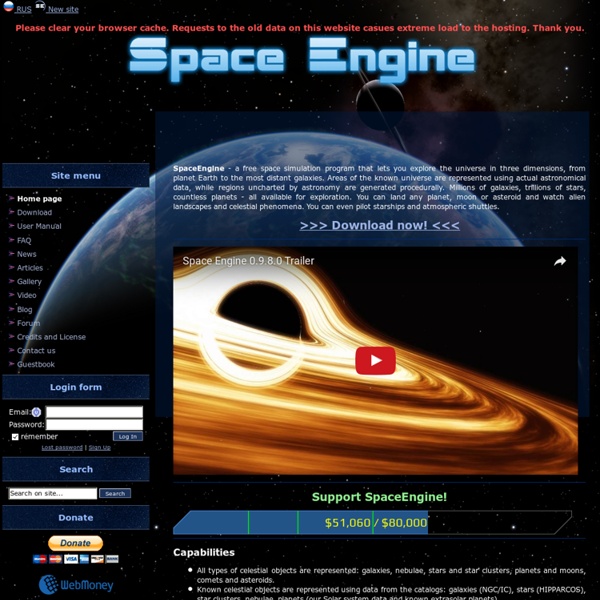Moon Madness!
I can't think of anything more fun to teach than space. The moon is one topic that I totally love teaching about! There's just so much great information out there. Nothing gets kids REALLY excited like learning about the moon! I have included some great videos, games and goodies (including a freebie) for you to use in your classroom as you study all about the moon!
WorldWide Telescope - Microsoft Research
Q. What is WorldWide Telescope? A. The WorldWide Telescope is a rich visualization environment that functions as a virtual telescope, bringing together imagery from the best ground- and space-based telescopes to enable seamless, guided explorations of the universe.
Part 1: The essential collection of visualisation resources
This is the first part of a multi-part series designed to share with readers an inspiring collection of the most important, effective, useful and practical data visualisation resources. The series will cover visualisation tools, resources for sourcing and handling data, online learning tutorials, visualisation blogs, visualisation books and academic papers. Your feedback is most welcome to help capture any additions or revisions so that this collection can live up to its claim as the essential list of resources. This first part presents the data visualisation tools associated with conducting analysis, creating effective graphs and implementing business intelligence operations. Please note, I may not have personally used all tools presented but have seen sufficient evidence of their value from other sources. Also, to avoid re-inventing the wheel, descriptive text may have been reproduced from the native websites for some resources.
Space
Below, you will find a wide range of ideas and resources to help you when you are teaching children about Space. If you have any relevant resources to share, please email them and I will add them to this page. Thank you!
NASA Posts a Huge Library of Space Sounds, And You're Free To Use Them
Space is the place. Again. And SoundCloud is now a place you can find sounds from the US government space agency, NASA. In addition to the requisite vocal clips (“Houston, we’ve had a problem” and “The Eagle has landed”), you get a lot more. There are rocket sounds, the chirps of satellites and equipment, lightning on Jupiter, interstellar plasma and radio emissions. And in one nod to humanity, and not just American humanity, there’s the Soviet satellite Sputnik (among many projects that are international in nature).
Big Data means Advanced Data Visualization
The last few years have been particularly exciting for data visualizations. We’ve witnessed a boom in the popularity of infographics and in tools to help create everyday visualizations for practical purposes. With all these exciting developments it’s difficult not to wonder what the future of this field will look like. Industry-renowned data visualization expert, Edward Tufte once said “The world is complex, dynamic, multidimensional; the paper is static, flat. How are we to represent the rich visual world of experience and measurement on mere flatland?”
MARS Rover Virtual Reality Panoramic images - 360 degree QTVR Photos from panoramas.dk
A Great Place to Watch the Weather - Dust devils The martian wind sends hundreds of dust devils spinning across the surface of the planet. From Spirit's high perch approximately 90 meters (295 feet) above the surrounding plains, as shown in this image taken from the summit of "Husband Hill," three dust devils are clearly visible in the plains of Gusev Crater.
NASA Kids Club
Skip to main content NASA Kids Club › Text Only Site Ready For A Challenge? Join Now!



